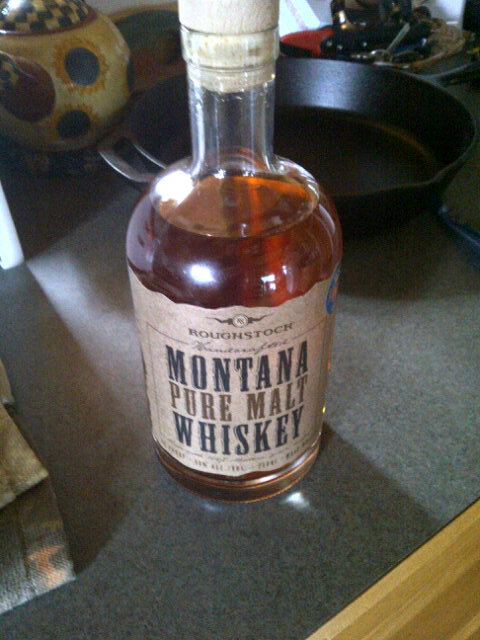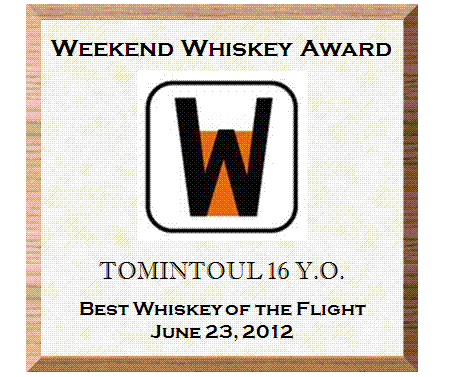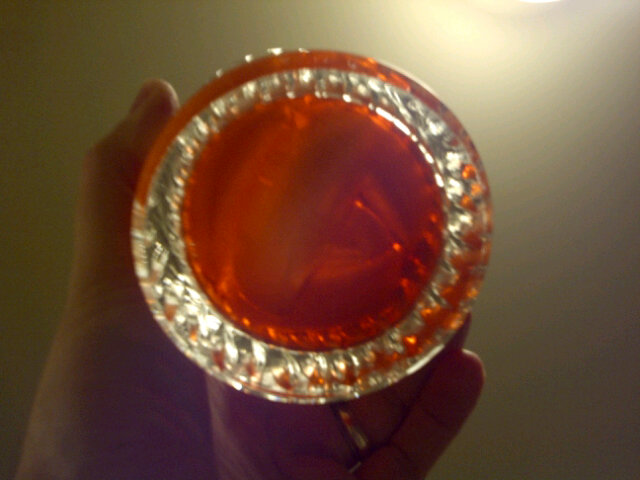 |
| The official Ardbeg Day tasting glass. |
But I also understand that I'm not likely to ever taste an Ardbeg Day release if I don't taste it free on or about Ardbeg Day. They're too expensive to buy untasted, and any bar that would have them would also have a hundred or two other Scotches closer to the top of my To Try List.
So when I got my Ardbeg Committee notice that Ardbeg Day would be observed in Washington, DC, on May 29, I promptly RSVP'ed -- on the off chance that I might be able to make it. About half of such things I wind up missing due to a minor, pop-up crisis of one sort or another, and for some reason the odds are even worse when it's an Ardbeg tasting. (Once I was actually at a tasting, and about two minutes before the Ardbeg girls were scheduled to start handing out samples, I got a call from my wife that the car had died and could I come pick her up.)
No surprise, then, when May 29 came and I couldn't get downtown in time for the tasting. Forget it, Jake. It's Ardbeg.
Surprise, however, when June 1 came and I saw an announcement posted the night before on the DC Whiskey Drinkers (And Other Local Spirits) Facebook page that Jack Rose Dining Saloon would be offering free pours of Ardbog that evening.
And what do you know, I made it.
Now, if you've never been to Jack Rose, you should know that, though named for an applejack drink, it is a whiskey bar. And by that I mean it arguably has the largest selection of whiskeys for purchase in the Western Hemisphere. I think 1,800 was the number I was told -- with plans to bring it up to 3,000 by this time next year (making it arguably the largest in the world).
 |
| It's a good thing -- for my liver, family life, and finances -- that this place is no closer than 30 minutes to my house. |
So when I got there half an hour before the tasting was to begin, I didn't beguile the time with a daiquiri. At the upstairs open-air terrace bar, I ordered a Russell's Reserve 10 yo, neat, with a Victory Summer Love back. (Not particularly exotic, but see the comment about my To Try List above.)
 |
| Ceci n'est pas un bouteille de bourbon. |
While working on the bourbon, I asked the bartender if the Ardbeg tasting would be upstairs (where last year's Ardbeg Day was observed). He said no, downstairs was the serious whiskey room, then introduced me to Roberto Cofino, the saloon's Scotch Malt Whisky Advisor, who happened by just then.
Roberto and I talked for a couple of minutes. He said he thought Ardbog was much more special than last year's Ardbeg Day release, and that I should spend more time nosing it since it would be hard to go back and pick out the details once I've tasted it.
He asked me what sort of whiskies I liked, and I gave him my stock fumbling answer, "Oh, I don't know, Islay, you know, Laphroaig, don't you know," which gets me through most whiskey conversations but clearly didn't give the present company much to work with. In the event, he talked up Port Charlotte 6 and 10 as particularly successful Bruichladdie experiments. (Which was coincidental, since I cracked a bottle of Laddie 10 last week and have been trying to make sense of it -- on which point, Las Vegas Whisky (@LVWhisky) helped by suggesting it's a nice break from Springbank 10.)
The palate was plenty smoky, but not at all the baconbomb of some Ardbegs. Most notable for me was the sweetness, like rock candy, that belied the dryness of the nose. It finished sweet, and the too-soon empty glass smelled of sweet creamed corn. The bartender asked me what I thought of it, and I said, "It's a lot subtler than other Ardbegs." She agreed.
My overall impression: I very much enjoyed the small pour I had, and would enjoy the occasional dram in the future, but I don't feel too bad about leaving the buying of Ardbog bottles to those with larger budgets and greater enthusiasm.
 |
| The one picture in this post that I took myself is the most commercial of them all. |
Having convinced myself that it would be de trop to snatch another free sample, I looked about at the other 1,798 whiskeys on offer. And because why not, I ordered an ounce of the Port Charlotte PC6 Cuairt-Beatha.
I suppose I should have known that, if Bruichladdie befuddles me over the course of several evenings at home, it's going to befuddle me in a single glass after a couple other whiskeys and beers. But this was definitely a good kind of befuddlement. I don't understand PC 6, but it tastes great. There's a lot of smoke and a lot of sweetness, with maybe a hint of a Lagavulin-like medicinal note. A few minutes and a little water brought blondies to the nose.
When the bartender asked, I said, "This is really, really good." And when Roberto came by, I stopped him and showed him the bottle (which at Jack Rose they leave in front of you to read like a cereal box) and we both agreed that it was really, really good.
My problem -- and "problem" may not be the mot juste here -- is that PC6 is at least one full step away from the whiskeys I'm used to. The good news is it's not a step in the direction of refinement, in which case I wouldn't be able to appreciate it until I worked my way up to it. It's more in the direction of flavor profile, which I can enjoy quite well even as I don't know where to place it on my internal whiskey map. And all that means is that I've got lots of exploring to do, to fill in the blank spots.
As I said, that isn't what we usually mean by a problem.































